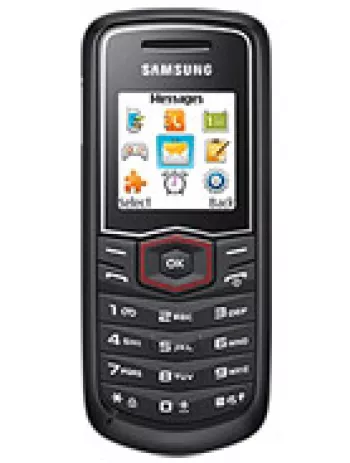
Overview of the Samsung i505
The Samsung i505 was an intriguing concept in the early days of mobile technology. Set to be released in the first quarter of 2004, the device was unfortunately cancelled before it ever hit the market. It was designed to operate on the Palm OS 5.2.1 platform, with capabilities that were quite advanced for its time. In this detailed analysis, we delve into the features, specifications, and potential impact of the Samsung i505, examining what could have been a significant player in the smartphone evolution.
Network and Connectivity
The Samsung i505 was designed to support GSM technology, with 2G bands covering GSM 900, 1800, and 1900 frequencies. This enabled the potential for widespread usage in various regions. Additionally, it supported GPRS Class 8, allowing basic internet connectivity, although it did not feature EDGE, which limited its speed in data transfer. While lacking modern connectivity standards such as WLAN and Bluetooth, the device featured an infrared port, which was a standard method for data exchange at the time.
Design and Build
With dimensions of 91 x 54 x 23 mm and weighing in at 147 grams, the Samsung i505 sported a compact design that was typical of early 2000s mobile devices. It used a Mini-SIM format, and its build was designed for portability and ease of use. The overall aesthetic was functional, prioritizing practicality over style, which was customary for devices of that era.
Display
The device featured a TFT resistive touchscreen capable of displaying 65K colors, a standard at the time for handheld devices. The resolution stood at 162 x 176 pixels, with support for a more detailed 324 x 352 pixels, albeit the latter being non-native. This screen, despite its modest specifications by today's standards, was quite usable for agenda management, basic applications, and light multimedia consumption.
Platform and Performance
Powered by a Motorola MX1 processor clocked at 200 MHz, the Samsung i505 relied on its Palm OS 5.2.1 operating system. This combination provided a relatively smooth user experience for tasks such as contact management, calendar functions, and note-taking. The 32MB RAM complemented the processor, facilitating decent multitasking capabilities for its time. Incorporating 32MB of ROM supplemented with an SD card slot further expanded its memory capacity, allowing users to save additional data and applications.
Camera Features
A single VGA camera with LED flash equipped the Samsung i505, offering basic photography and video capabilities. At 0.3 megapixels, the camera was designed for quick snapshots rather than detailed photo shoots, reflecting the period's standard mobile imaging technology. Despite being simplistic, it enabled users to capture spontaneous moments and engage in basic filmmaking.
Sound and Audio
The device fell short in audio support, lacking a loudspeaker and the more modern 3.5mm headphone jack. However, it did support vibration alerts and downloadable polyphonic ringtones, offering users some degree of personalization in sound settings. Given its intended use as a PDA rather than a media device, these audio limitations were not a significant drawback then.
Communication and Data Transfer
Data transfer relied heavily on the infrared port, a method commonly used for exchanging files between devices before the widespread adoption of Bluetooth and USB technologies. The proprietary USB interface also allowed connection to PCs for data synchronization and charging. These features symbolized the technological landscape of 2004, representing a transitional phase in mobile communications.
Battery Life
The Samsung i505 was powered by a removable Li-Ion battery with a capacity of 600mAh, providing up to 96 hours of standby time and approximately 2 hours and 30 minutes of talk time. While these figures may seem limited today, they were adequate for typical uses, marking a balance between performance needs and battery technology available at that time.
Potential Market Impact
Although ultimately cancelled, the Samsung i505 concept drew attention to the potential of combining PDA functionalities with mobile phone capabilities. Had it been released, it could have catered to business professionals and technology enthusiasts seeking compact devices with productivity features. Its design underscored a shift in the industry towards multifunctional mobile devices, setting a precedent for future smartphones.
Conclusion
The Samsung i505, in its planned form, encapsulated the technological ambitions and limitations of early 2000s mobile devices. Despite never reaching consumers, it highlighted pivotal trends and expectations for handheld devices, emphasizing a growing demand for integration of communication, organization, and basic multimedia into single compact units. Today, its concept offers a fascinating insight into the evolutionary trajectory that has shaped modern smartphones.
Key Features of Samsung i505
- Network Technology: GSM 900 / 1800 / 1900
- Display: TFT resistive touchscreen with 65K colors
- Operating System: Palm 5.2.1
- CPU: Motorola MX1 200 MHz
- Memory: 32MB RAM, 32MB ROM with SD card slot
- Main Camera: VGA with LED flash
- Infrared Port for Connectivity
- Browser: WAP 2.0/xHTML
- Battery Life: Up to 96 hours standby, Up to 2 hours 30 minutes talk time
Samsung i505 Key Disadvantages
- Limited Network Technology: Only supports GSM; lacks EDGE and 3G or newer network technologies.
- Status: Cancelled, was never released to the market.
- Heavy and Bulky: Weighs 147 g and dimensions are relatively large for its time at 91 x 54 x 23 mm.
- Display resolution is low at 162 x 176 pixels.
- Resistive touchscreen, which can be less responsive compared to modern capacitive screens.
- Operating System: Uses Palm 5.2.1, which is outdated and lacks modern app support.
- Insufficient Memory: Only 32MB RAM and 32MB ROM.
- Insufficient Camera: Features a basic VGA camera only.
- No front (selfie) camera.
- No loudspeaker is included.
- Absence of a 3.5mm headphone jack.
- No WLAN, Bluetooth, or GPS for connectivity.
- Lacks a built-in radio.
- Proprietary USB connection, which can limit compatibility with other devices.
- Limited Battery Life: Talk time up to 2 hours and 30 minutes only.

View Also
More Phones
All Rights Reserved +14266 Phones © Mobilawy 2025

























